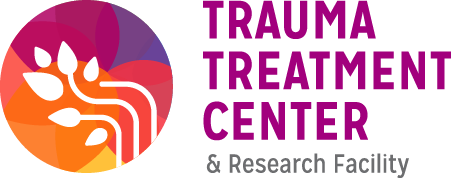Even in the best of years uncertainty breeds anxiety. This year we have lots of both.
COVID-19 restrictions have been lifted in New Mexico, but the number of infections is climbing. This is a no man’s land of people who are sometimes masked and sometimes not, and “vaccinated or not” is a point of pride or judgment.
The initial jubilation of a carefree, sunny summer is now being eclipsed by darkening clouds of a fearful fall.
As New Mexico’s hospitals fill and its death toll rises, the strides we made to claw our way back to normality are now in jeopardy. The data shows that we are in the midst of a backslide.
Across the US and the world, national, state, and local governments, businesses, and public entities are reinstating restrictions. Some are even including penalties for noncompliance.
Some healthcare workers will be fired unless they are vaccinated. Some companies and schools are making COVID vaccination mandatory for workers and students. The NFL will fine individuals and teams for lack of COVID protocol compliance and any games that are forfeited because of COVID.
All of these new restrictions are adding to people’s stress.
In 2021-2022, with the rise of virus variants, well-intentioned plans to return to in-person work, school, and social events may suddenly switch into a hybrid plan or a return to complete social distancing.
Fully open, hybrid, or full lockdown scenarios all create economic and other stresses on parents/caregivers, which adds to every family member’s anxiety.
On the flip side, returning to “normal” has its own stresses.
Some students and workers have thrived under COVID because they were removed from schoolyard or workplace triggers, aggression, and bullying. For some, returning to school or the workplace means returning to an actively hostile or biased landscape.
COVID-19 Post Traumatic Stress Disorder
Many people are caught somewhere on the trauma spectrum. These folks might reasonably be showing signs of PTSD.
The response to all this anxiety and uncertainty can be intense. The part of the brain that senses whether we are being attacked, the amygdala, activates the fight or flight response. To an outside observer, the stimuli may appear minor, but to the brain of someone with COVID anxiety, the situation can feel like a life-or-death struggle.
When a person has Post Traumatic Stress Disorder (PTSD), they often have the same intense emotions that they would if the upsetting event was happening to them all over again.
The hard part of the COVID backsliding is that the stress and trauma are like deja vu. You can’t treat post-traumatic stress until the current trauma is finished.
And COVID isn’t anywhere near finished.
Coronavirus PTSD Impacts Many People
Coronavirus stress affects people from all walks of life. PTSD has been documented in healthcare workers, first responders, journalists, mourners, survivors (Chinese researchers found that 96.2 percent of recovering COVID patients were experiencing symptoms of PTSD), COVID long-haulers, people who lost jobs or housing because of the pandemic, kids who lost a year of school, those living in social isolation, and many more.
If you want to read some COVID PTSD statistics, Psychiatric Times has a comprehensive list.
How to Cope with COVID-19 Anxiety or PTSD
There are many things you can do to relieve the stress of COVID-19 anxiety or PTSD. Here are just a few of our favorite stress relievers:
Connect Over Video: Quarantined isolation has created a loneliness epidemic. Use video chat (Zoom, Google Meet, Skype, Facetime, etc.) to maintain social and emotional connections with friends and family.
Let’s Get Physical: The benefits of exercise to relieve stress and improve mental health are strongest when done regularly. Consistent exercisers are less likely to experience anxiety than those who don’t. Regular exercise helps lower stress and anxiety by releasing endorphins (a feel-good brain chemical). It also boosts your confidence and self-image.
Choose any exercise:
Walk (outside or on the treadmill)
Gym (if open. If not, ask if they offer streaming options)
Take an exercise class in person or online
Dance
Strength training
Kayaking/rafting
Running/Jogging/Wogging
Biking
Tennis
Get out in nature: Many studies have shown that just getting out and seeing greenery can elevate your mood. Take a half-hour walk outside at a local park. The more regular you can make your walks the better you’ll feel.
Seek Mental Health Support: Sometimes speaking to a professional counselor can relieve more stress than nature walking the Appalachian Trail. We have created a list of resources (below) so you can find the help you need.
For more information, check out our blog: 27 Ways to To Relieve COVID-19 Anxiety [LINK TK].
Resources for New Mexicans Feeling COVID-19 PTSD
The problem is real, and there is help available. We have compiled a list of New Mexico resources that can help people:
State of New Mexico Emotional Support Resources https://www.newmexico.gov/stress/
New Mexico Crisis and Access Line; call toll free 24/7 1-855-NMCRISIS (662-7474) or visit https://nmcrisisline.com/covid-19-resources/
New Mexico Department of Health Coronavirus Information by phone 1-855-600-3453 or online https://cv.nmhealth.org
Schedule a vaccine at vaccinenm.org
Financial Assistance https://www.newmexico.gov/i-need-assistance/
Health Insurance https://www.newmexico.gov/health-coverage/
Seniors and Disabled Adults Food Access Hotline 1-800-432-2080
Tribal Directed Resources http://www.aaihb.org/covid-19-resources-.aspx
Mental health and substance concerns (New Mexico Crisis and Access Line) 1-855-662-7474
US Center For Disease Control (CDC) Coping with Stress During COVID-19 https://www.cdc.gov/coronavirus/2019-ncov/daily-life-coping/managing-stress-anxiety.html
US Dept of Veterans Affairs has a good list of resources for everyone https://www.ptsd.va.gov/covid/index.asp.

